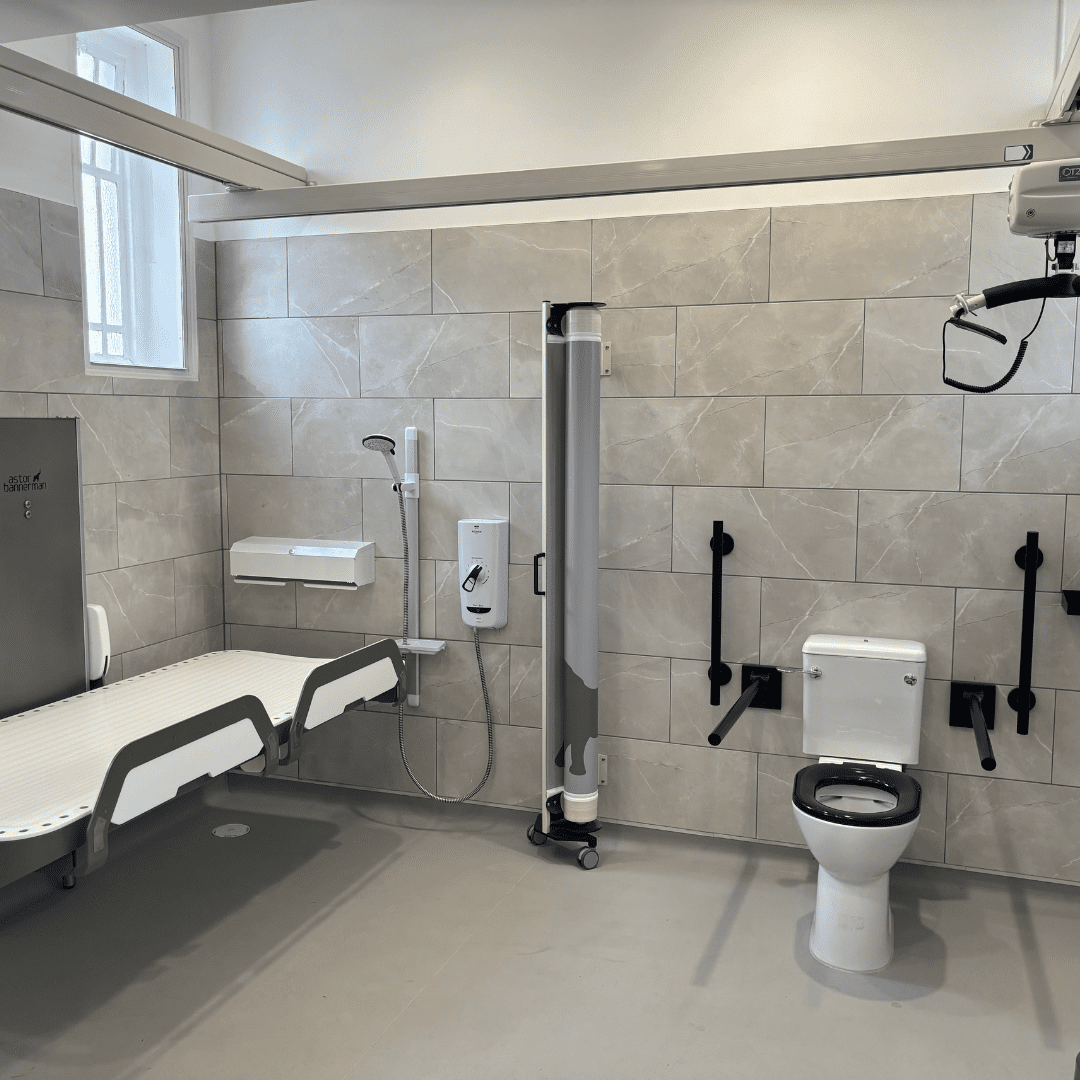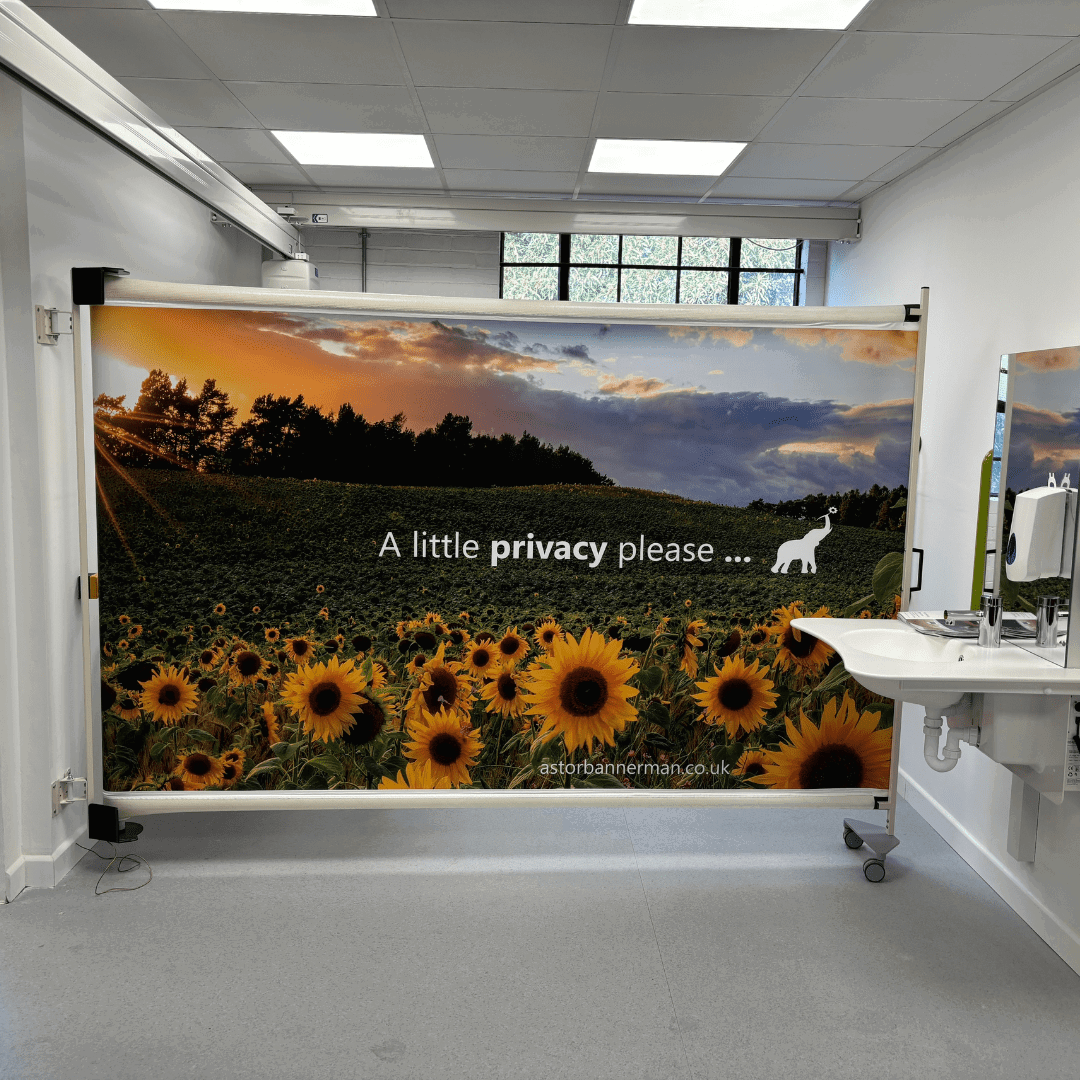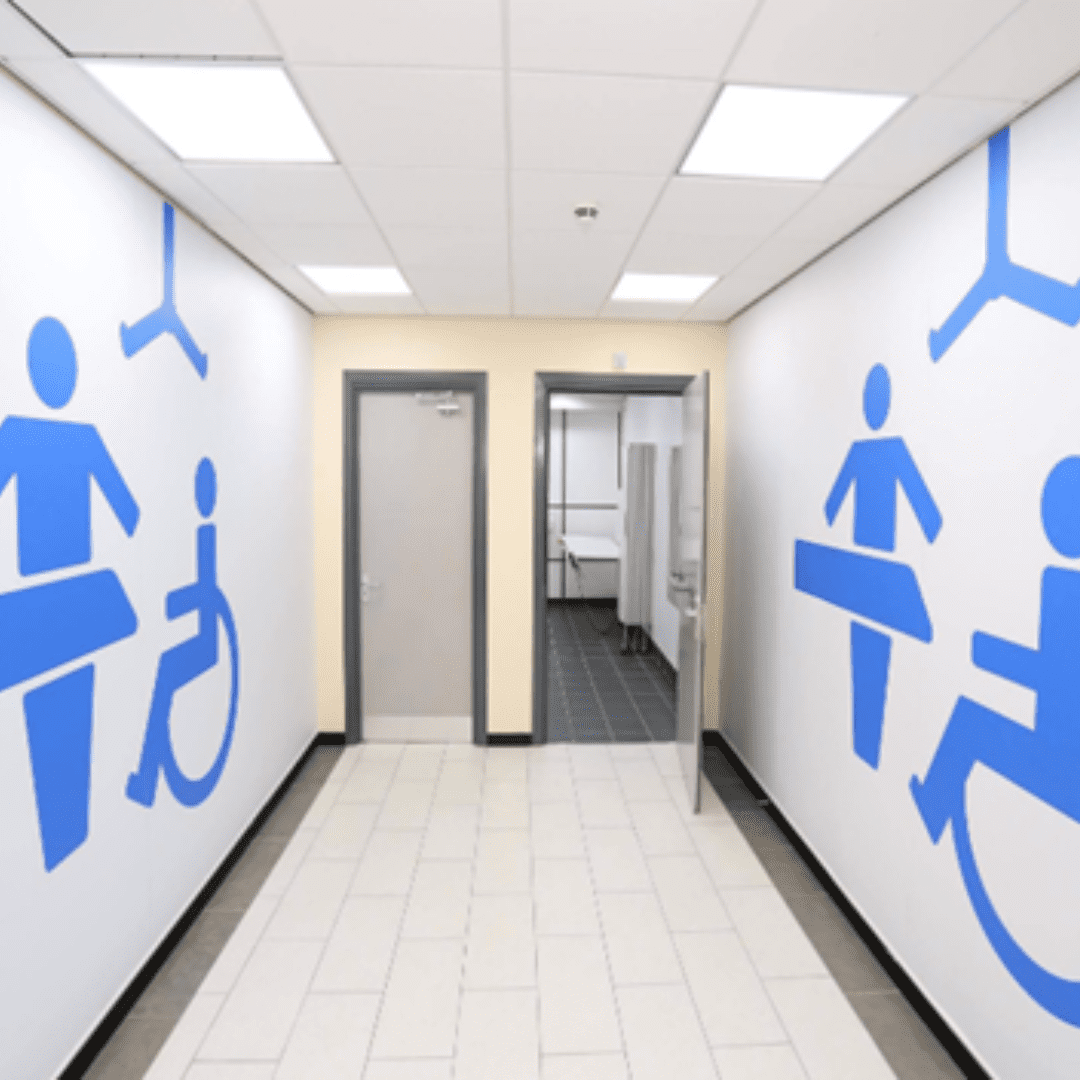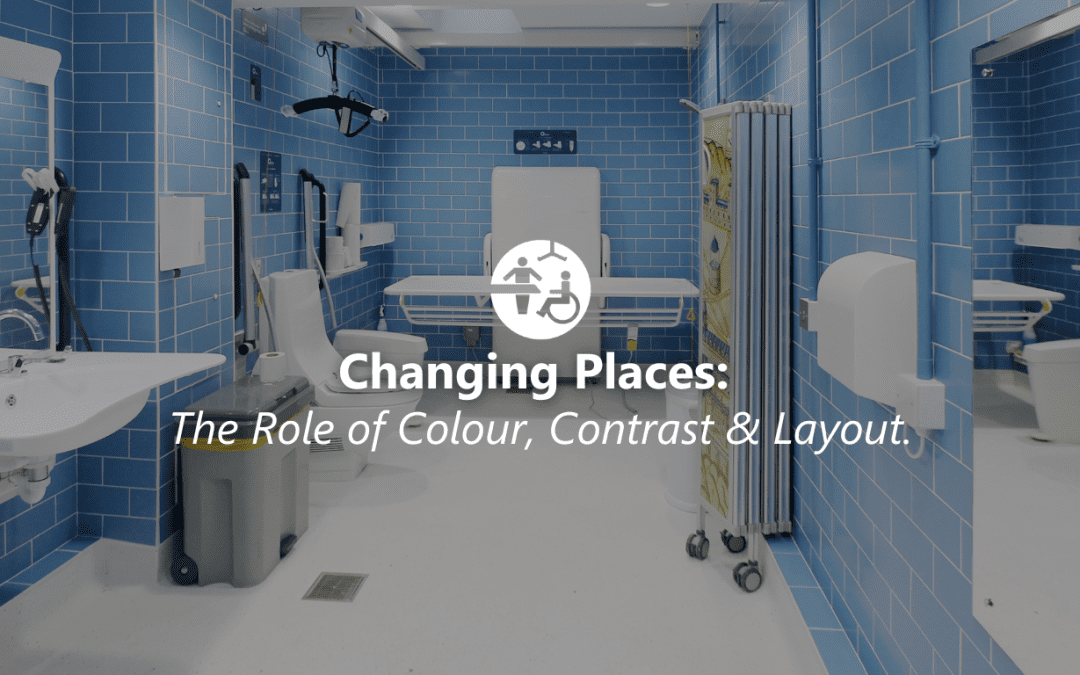4 Things to Consider:
High contrast isn’t just a design trend—it’s a necessity for many users.
-
Grab rails, emergency cords, doors and switches should stand out clearly from the background.
-
Avoid harsh clinical whites. Instead, opt for softer tones to create a welcoming, less institutional space.
-
Use calming colour palettes that reduce overstimulation and support those with sensory processing needs, autism, or dementia.
Design Tip: Aim for visual clarity—contrasts help users locate key features easily, which enhances safety and independence.

A well-planned layout ensures both user dignity and carer support.
-
Keep the space open and uncluttered, with clear movement zones for a wheelchair and up to two carers.Position the washbasin within easy reach of both the bench and the toilet.
-
The ceiling track hoist should cover all key areas: the toilet, changing bench, and wheelchair space.
Design Tip: Map the space from the user’s perspective. Is the room easy to navigate?
Can carers work efficiently? Logical flow makes all the difference.

Changing Places doesn’t have to feel clinical. In fact, it shouldn’t.
-
Use materials and colours that complement the wider building design—whether in leisure centres, transport hubs, or corporate spaces.
-
Incorporate calming design features such as LED lighting or printed wall coverings like KwickScreens.
-
Reflect your brand identity subtly, without compromising on function.
Architect Tip: Get specialists involved early. Once layout decisions are made, it can be difficult to make compliance-led changes later on.

Not all disabilities are visible, so inclusive design must consider more than mobility.
-
Sensory-friendly spaces with minimal visual clutter and calming colours reduce anxiety.
-
Avoid overwhelming imagery and overstimulating environments.
-
Consider features such as soft LED lighting, custom KwickScreens, and clear signage to aid wayfinding and comfort.
Did you know? Around 11 million people in the UK have a disability, including 1.2 million wheelchair users—yet many more benefit from inclusive design, such as those with sensory, cognitive, or temporary impairments.

Functional Design That Looks Good
You don’t have to choose between style and accessibility—modern Changing Places design offers both.
The Astor Invincible Bench is ideal for high-traffic environments, combining long-lasting durability with a sleek, practical design that suits any setting.
Our Aquba Range, available in matte black or white, delivers a clean, minimalist aesthetic that fits effortlessly into contemporary interiors while supporting safe, dignified care.
To complete the space, HEWI accessories offer colour-matched grab rails, support arms and fittings—creating a cohesive, thoughtfully designed environment without compromising on safety or compliance.

Final Thoughts
At Astor Bannerman, we support you from concept to install. This includes CPD sessions, compliance advice, layout reviews, and equipment demonstrations to ensure every facility meets both user needs and design expectations.
-
Prioritise clear contrast
-
Use calming colour palettes
-
Plan logical, user-centred layouts
-
Consult specialists early
Let's Talk
Need help specifying a Changing Places facility? Contact our expert team today to book a free CPD, design consultation or product demonstration.


